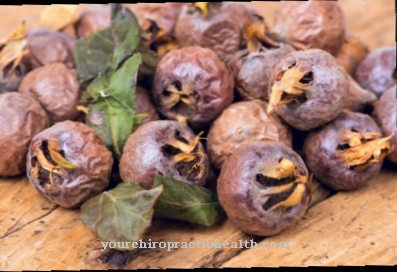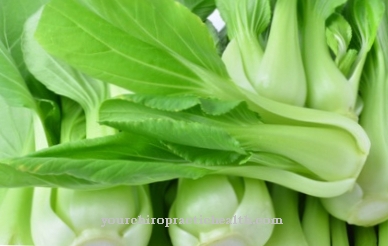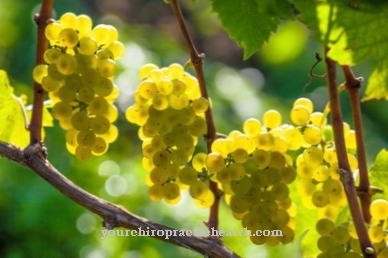mustard is a hot-tasting spice made from the seeds of the mustard plant. The mustard seeds can be used whole, as mustard powder or as a seasoning paste.
What you should know about mustard

Mustard seeds come from white, brown or black mustard. All mustard plants belong to the cruciferous family (Brassicaceae). The name of each mustard plant refers to the color of the seeds. Mustard plants are annual plants with an herbaceous habit.
Jointed and serrated leaves sit on the branched and angular stems. The leaves can also be hairy. The upper leaves are also pinnately divided or completely pinnate. Mustard plants grow to be between 30 and 120 centimeters tall. In the flowering period from June to July, the plants produce numerous yellow flowers. Pods stand horizontally from the stem. These are four millimeters in diameter and contain four to eight mustard seeds.
White mustard is a crop that is mainly grown in the Mediterranean region. Brown mustard originally comes from Asia, but is now grown worldwide. Black mustard is also native to the Mediterranean region. But it has been cultivated in other areas for a very long time. Mustard powder can be obtained from the mustard seeds by grinding. This must consist of at least 80 percent mustard seeds. For the production of mustard powder, white mustard seeds with peel are mostly used.
The most common use of mustard seeds is in the production of mustard paste. The abbreviation mustard has become popular for this mustard paste. Traditionally, mustard is mixed with grape must in mustard production. Today, however, table mustard is more likely to be made from mustard, water, vinegar and salt. Depending on the variety, different spices or other ingredients are added.
The mustard seeds must first be cleaned before production. Then they are crushed and de-oiled between the rollers of the mustard mill. The mustard meal is mixed with the other ingredients. This creates a mash. This has to ferment. This is the only way to develop the typical mustard aroma. Then the mash pulp is ground to a coarser or finer paste, depending on the variety.
The temperature during this grinding process must not exceed 50 ° Celsius. Otherwise the essential oils would evaporate and the mustard would lose its aroma. After the grinding process, the mustard has to rest for a few hours before it can be filled. Mustard only reaches its final maturity in the tube or in the glass. Medium-hot mustard has to be stored for a few weeks before it is sold so that it can break down excess heat.
The type of table mustard is determined by the selection of mustard seeds, the degree of grinding and the vinegar or must used. Other ingredients such as honey, lemon juice, cinnamon, beer, garlic or caramel give the mustard different taste nuances.
Importance to health
Mustard is not only suitable for refining dishes, it also has health-promoting properties. The main active ingredients in mustard are mustard oil glycosides. They are stored in the cells of the seeds and are released by grinding or using a mortar. The mustard oils protect the mustard plant from predators and have an antibacterial effect on humans. They stimulate digestion and promote defecation. Food that is difficult to digest becomes more digestible with mustard.
In traditional herbalism, mustard seeds are used to treat catarrh of the airways, soft tissue rheumatism and chronic joint diseases.
Some studies suggest that mustard might also protect against cancer. In a study by the University of Freiburg, the test subjects were given a tablespoon of mustard daily. After a certain time, leukocytes were taken from them. These were brought into contact with carcinogenic toxins. The scientists then analyzed the damage that the toxins had caused to the white blood cells. The researchers found the mustard to have a clear protective effect.
However, in too high a dose and administered over a long period of time, mustard can also lead to irritation in the gastrointestinal tract. The spice plant can also promote the development of stomach ulcers.
Ingredients & nutritional values
Mustard seeds consist of 20 to 40 percent mustard oil. 28 percent are proteins. Glycosides such as sinalbin and sinigrin are also contained. The mustard oil glycosides are responsible for the sharp taste of mustard. They are not sharp per se, but the grinding process and contact with liquid activate the enzyme myroninase. It converts the mustard glycosides into glucose, sulfuric acid and isothiocyanates. The isothiocyanates are also called mustard essential oil.
The glycoside sinalbin from the white mustard is significantly milder than the glycoside sinigrin from the brown and black mustard.
Intolerances & allergies
An allergy to mustard and foods containing mustard is quite common. That is why there is a labeling requirement for mustard. This means that restaurateurs have to indicate if one of their dishes contains mustard. An allergy to mustard can lead to allergic reactions to other cruciferous plants such as rapeseed, cauliflower, beets or Chinese cabbage.
Shopping & kitchen tips
There are big differences in the quality of mustard. However, the quality does not always correlate with the price. A good mustard doesn't need much more than mustard seeds, water, vinegar, and salt. Preservatives and flavors really have no place in a quality product.
When buying, you should therefore ensure that the list of ingredients on the mustard packaging is as short as possible. Otherwise, the purchase decision is of course based on personal taste. The most popular mustard in Germany is medium hot mustard. It is also known as delicacy mustard. Sweet mustard is particularly popular in southern Germany. Bavarian mustard consists of roasted mustard seeds, sugar and applesauce. Particularly high-quality white sausage mustard is sweetened with honey and sold as honey mustard.
Rotisseur mustard is also known as grainy mustard. This is not as sensitive to heat as the ground mustard. Dijon mustard must be made from brown or black mustard seeds. Traditionally, the grains must not be de-oiled.This gentle production method gives Dijon mustard its special aroma. If unfermented grape juice (must) is still used for mustard production, as was customary in the past, mustard is also known as mustard.
Traditional English mustard is very hot and is made from white and black mustard seeds. The spiciness comes from the mustard flour used and is not artificially created in traditionally produced English mustard.
Preparation tips
The classic mustard goes well with almost all dishes in hot or cold cuisine. Tarragon mustard goes well with white meat or is used to refine a Bérnaise. Mustard with garlic goes perfectly with lamb or mutton and is suitable for seasoning salad dressings. Fiery and hot mustards go well with briefly fried meat or vegetable salads.
The mustard seeds flavor pickled vegetables such as cucumbers or mixed pickles. Mustard powder can be used in beef dishes, soups or sauces.













.jpg)

.jpg)
.jpg)











.jpg)